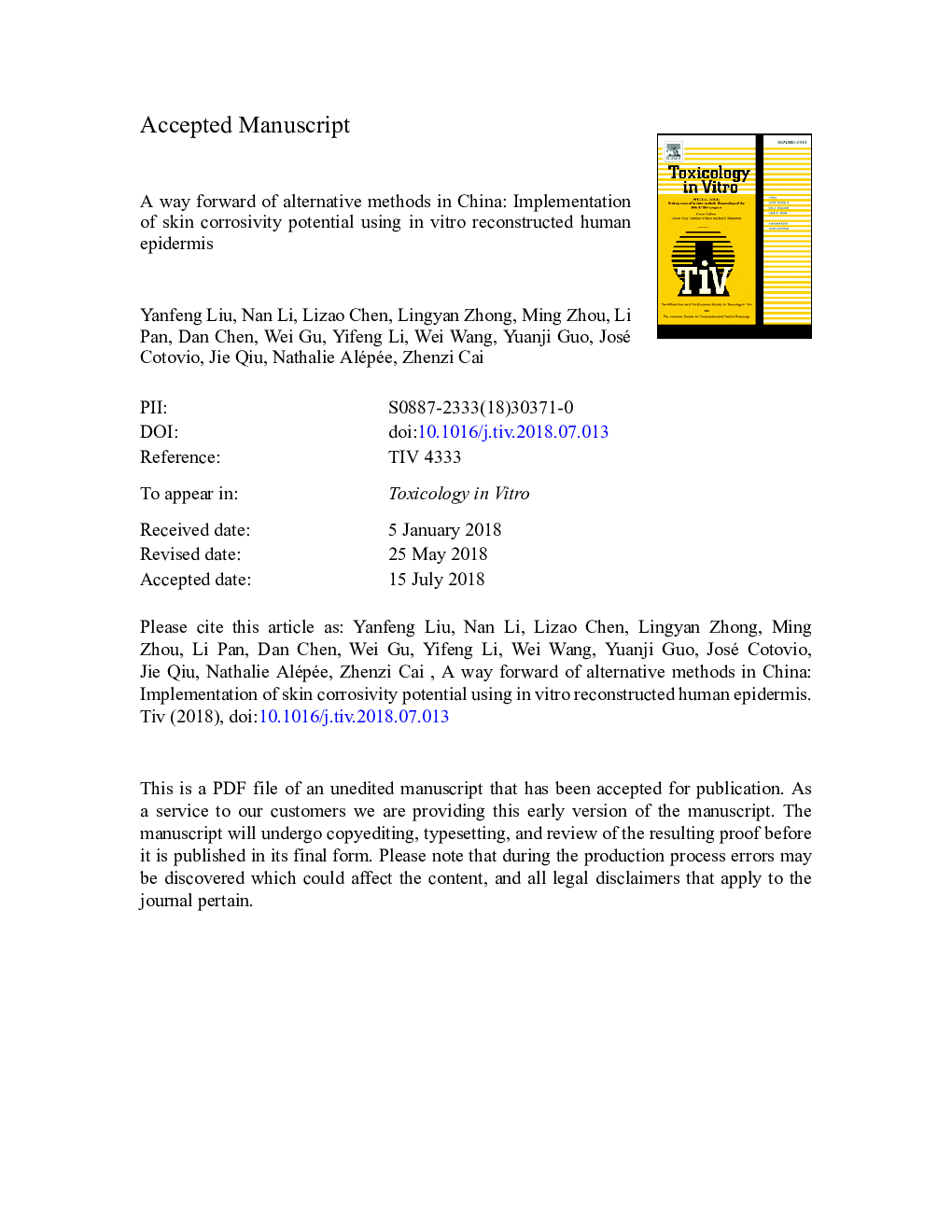| Article ID | Journal | Published Year | Pages | File Type |
|---|---|---|---|---|
| 8553876 | Toxicology in Vitro | 2018 | 38 Pages |
Abstract
The purpose of present study was to investigate the applicability of reconstructed human epidermis model to identify skin corrosive UN GHS Categories 1A, 1B/1C and non-corrosive chemicals in China. By using a commercialized reconstructed human epidermis model, China EpiSkin⢠which had been proven to be applicable as a stand-alone test method to predict skin irritation in previous study, the predictive capacity of corrosion was assessed with 76 chemicals that included 30 reference chemicals recommended by OECD TG 431 in this study. The latter reference chemicals were tested in three runs, the within-laboratory reproducibility reached 100%, the accuracy was 90% for distinguishing corrosive and non-corrosive chemicals and 80% for sub-categorization (Cat. 1A vs Cat. 1B/1C vs non corrosive). Additional 46 chemicals were also tested, and the overall accuracy for sub-categorization of all 76 tested chemicals was 80.3% with 91.7% sensitivity for Category 1A, 82.1% sensitivity for category 1B/1C and 75% specificity which met all required predictive capacity by OECD. The present study results show that China EpiSkin⢠model can be applied to predict sub-categorization 1A and 1B/1C of corrosive chemicals. The availability of skin corrosion in vitro test method provides the applicability of in vitro non-animal testing method for chemicals widely used in various industries, and will further support the implementation and promotion of alternative methods in China.
Keywords
GHSNGCTDGEURL ECVAMHClNaClWLRD-PBSRHECASRNOECDchemical abstract service registry number3-(4,5-dimethylthiazol-2-yl)-2,5-diphenyltetrazolium bromideMTTScThydrochloric acidstandard deviationsReconstructed human epidermisTERIn vitrotest guidelineUnited NationsOrganization for Economic Co-operation and DevelopmentSodium chlorideGlobally harmonized system of classification and labelling of chemicalsDulbecco's phosphate buffered salinePrediction modelTranscutaneous Electrical Resistanceoptical densityhigh performance liquid chromatographyHPLCPositive controlnegative control
Related Topics
Life Sciences
Environmental Science
Health, Toxicology and Mutagenesis
Authors
Yanfeng Liu, Nan Li, Lizao Chen, Lingyan Zhong, Ming Zhou, Li Pan, Dan Chen, Wei Gu, Yifeng Li, Wei Wang, Yuanji Guo, José Cotovio, Jie Qiu, Nathalie Alépée, Zhenzi Cai,
